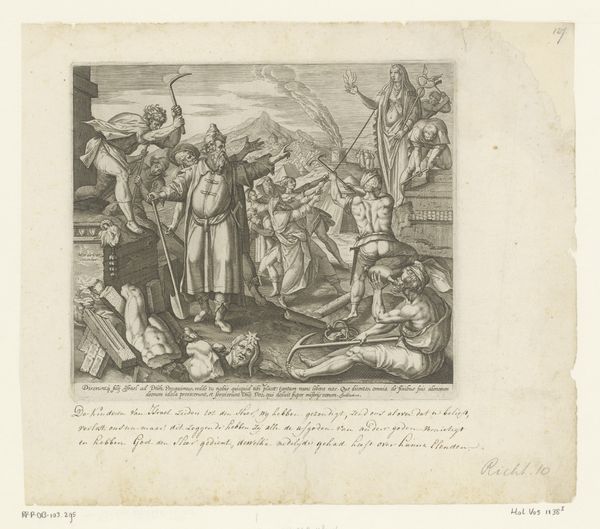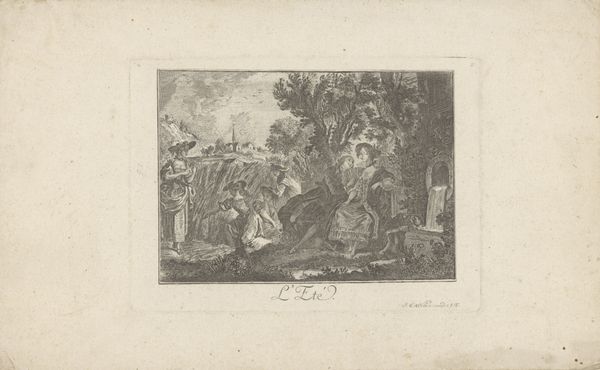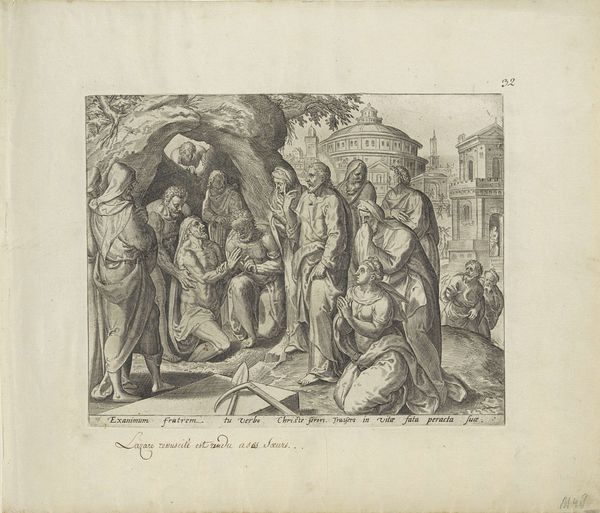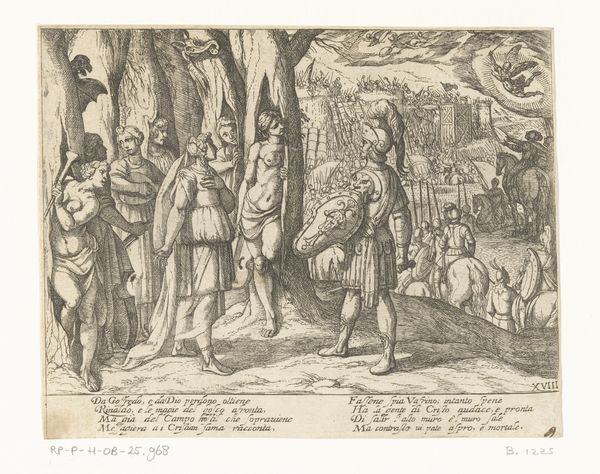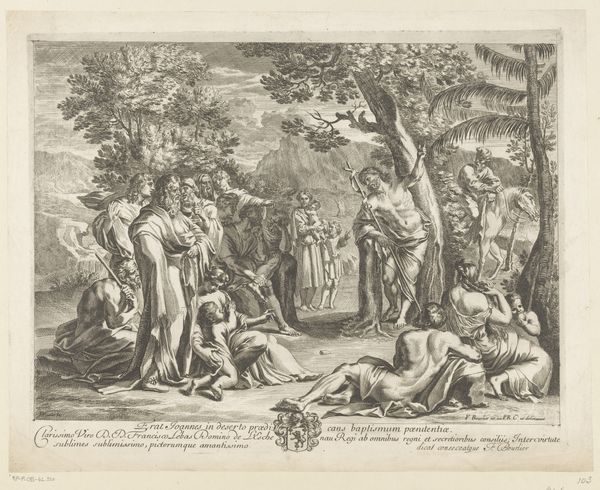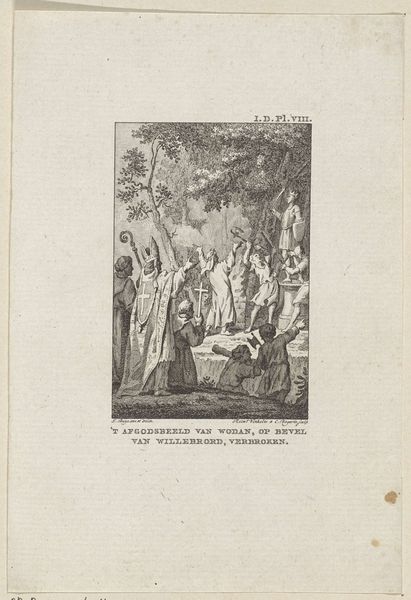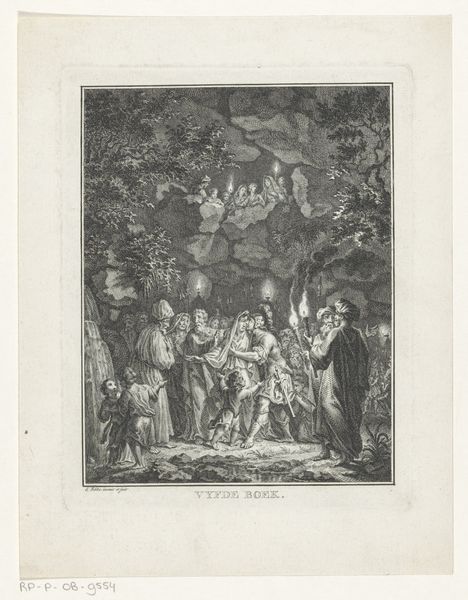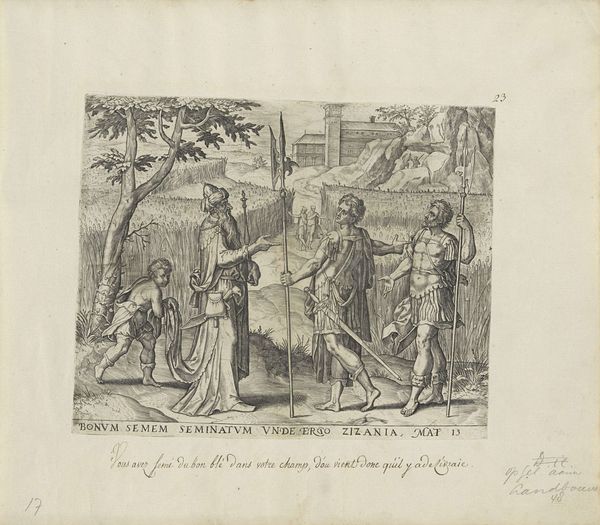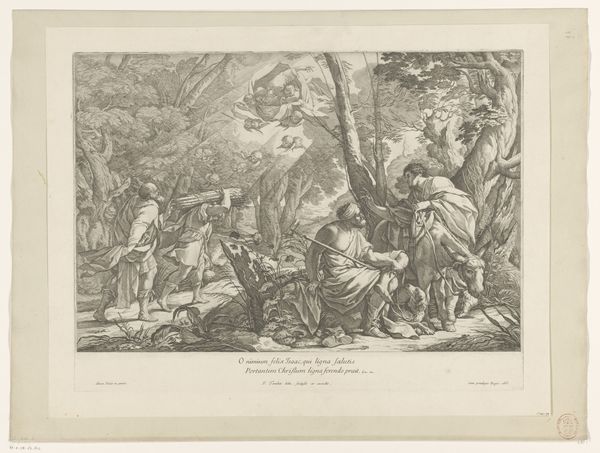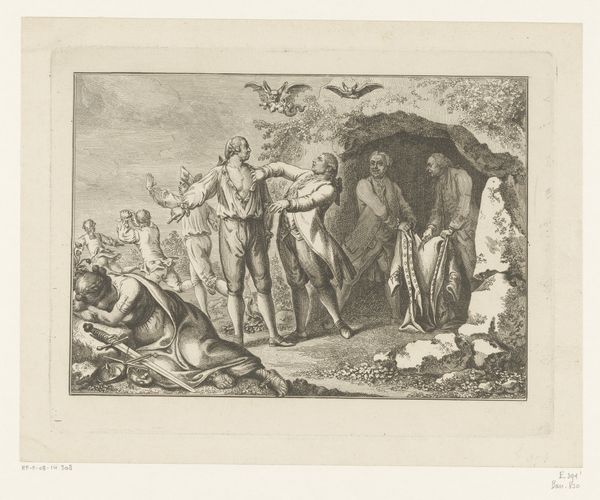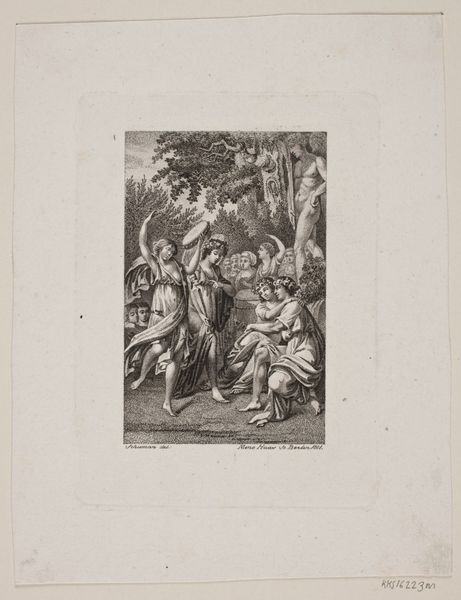
print, engraving
#
allegory
# print
#
old engraving style
#
history-painting
#
northern-renaissance
#
engraving
Dimensions: height 212 mm, width 238 mm
Copyright: Rijks Museum: Open Domain
Philips Galle created this engraving, "Vreugde in de hemel om boetvaardige zondaar," sometime before his death in 1612. It's an era defined by the religious and political upheavals of the Reformation, where ideas about sin, redemption, and divine judgment were intensely debated. Here, Galle visualizes a complex theological concept: the rejoicing in heaven over one repentant sinner. Angels and allegorical figures lead a newly converted soul, draped in modesty, towards celestial glory. But the engraving doesn't just illustrate religious doctrine, it speaks to the social anxieties of its time. The act of repentance was not solely a private matter; it had significant social and political implications. Public displays of contrition were common, reflecting a culture deeply concerned with maintaining moral order. Galle’s work can be seen as participating in this broader cultural project, reinforcing the importance of adhering to religious norms. It attempts to render the invisible, visible and the personal, communal.
Comments
No comments
Be the first to comment and join the conversation on the ultimate creative platform.


